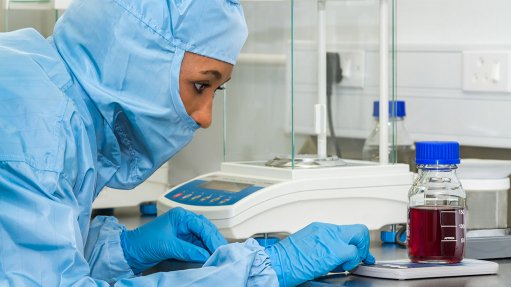
The successful installation of a R13-million ISO 3 cleanroom and BSL3 laboratory at national mineral research organisation Mintek was proof that the Department of Science and Technology’s (DST’s) ongoing investment in national research projects was bearing fruit, Science and Technology Minister Naledi Pandor said this week.
Speaking at the unveiling of the cleanroom and laboratory at Mintek’s Nanotechnology Innovation Centre (NIC), in Johannesburg, she noted that such facilities played an important role, not only in helping to solve pertinent social issues, but also in “developing young minds and helping [to equip] our researchers with the skills they need for their work”.
The cleanroom and laboratory, which were installed by international consulting and engineering company Royal HaskoningDHV, would enable local researchers to develop and fabricate nanotechnology-based diagnostic devices and tools for application in the health sector, as well as for the containment of biological reagents.
It would further enable the NIC to produce nanotechnology-based devices and systems in-house that meet International Organisation for Standardisation standards.
These diagnostic devices would be capable of diagnosing illnesses, such as malaria, at an early stage.
“Early diagnosis and subsequent treatment is a crucial life saver for those afflicted and is a major step forward in disease control for the country,” said Royal HaskoningDHV specialised cleanrooms division project manager and mechanical engineer Walter van der Linde.
He explained that the contract entailed the design and site supervision of the ISO 3 cleanroom, the BSL 3 laboratory and manufacturing lab for rapid diagnostic devices including all mechanical, electrical, lab layout and structural services.
The electrical services portion of the contract included the provision of lighting, electrical reticulation to support the mechanical equipment, switched socket outlets and power supply to the general lab equipment.
The mechanical services included the provision of an environmental control system, unidirectional airflow, an autoclave, an effluent system, a fumigation pass-through hatch, wet and gas services and biosafety cabinets.
Royal HaskoningDHV’s cleanrooms team was also responsible for the lab layout and specifying the partitioning type and the shell of the cleanroom and biosafety laboratory, said Van der Linde.